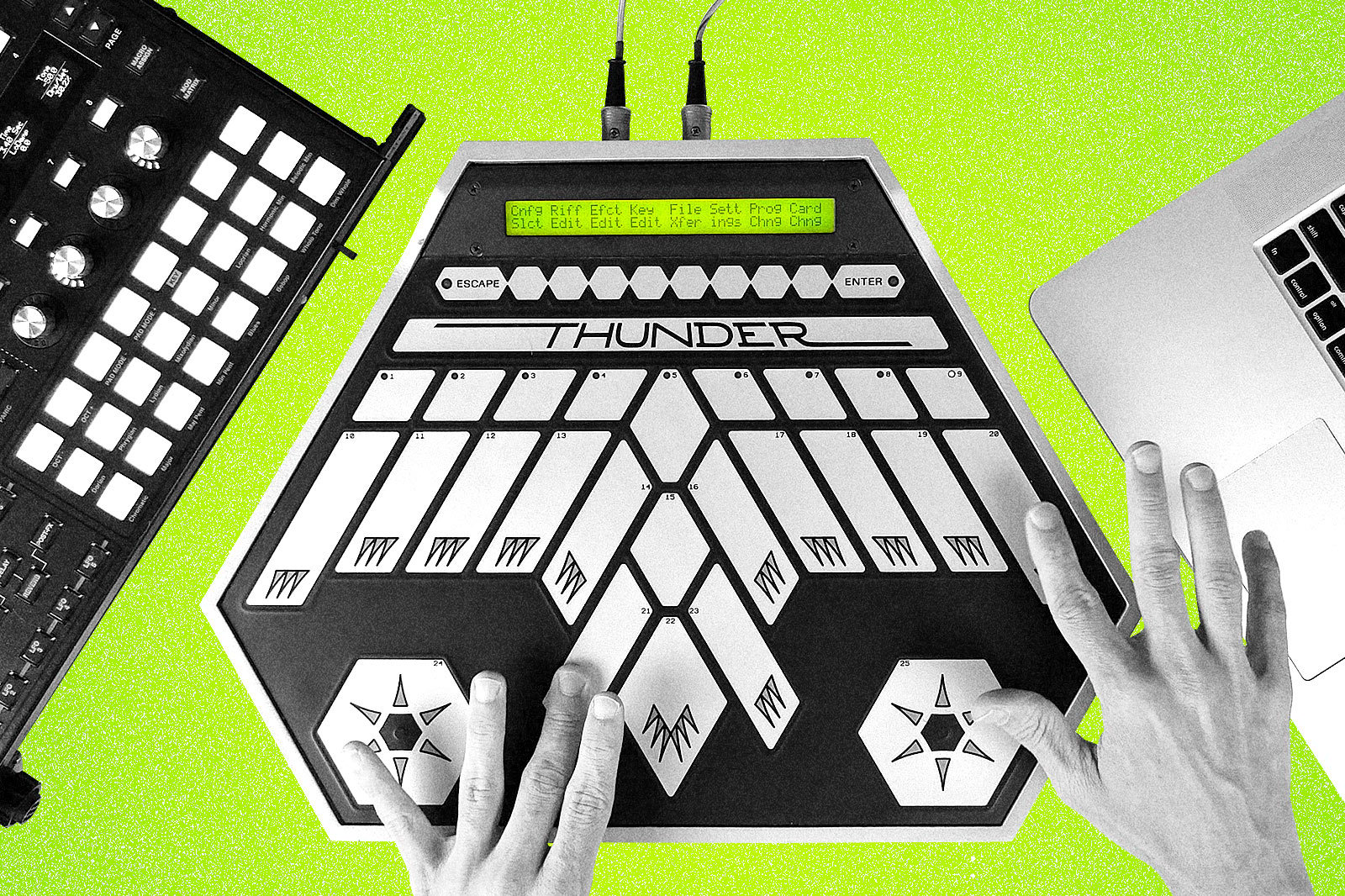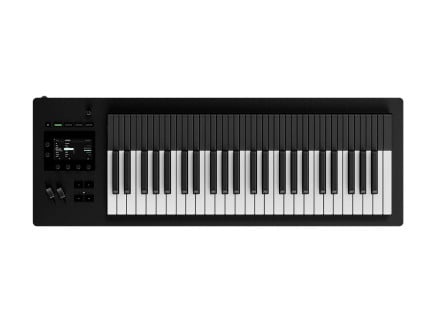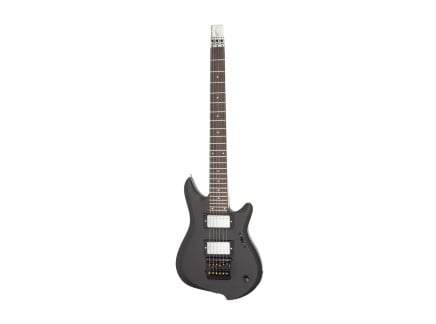Editor's note: this article is part of a two-part series prepared by Mike Metlay, discussing topics surrounding the concept of alternative controllers. Alternative control methods have been around as long as we've had electronic instruments—musicians have grappled with how to interact with sound-making structures that don't abide by the same physical rules and restrictions as acoustic instruments, whose sonic character and physical construction are intrinsically linked. In this article, we present a flyover history of controller design for electronic instruments. In the follow-up article Speaking the Language, we encounter various topics about the mindset behind alternative controller designs—and posit what makes some designs succeed while others fail.
New Ways to Touch Music
In the early 1960s, two visionary engineers—Don Buchla in California and Bob Moog in New York—were designing the first commercially available modular synthesizers. Buchla made the deliberate decision to avoid any sort of conventional playing interface, freeing musicians from traditional ways of thinking. On the other hand, Moog decided that offering the option of a familiar keyboard would make his synthesizers more accessible to traditionally-trained musicians. [See this article for more detail about the differences in their approaches to instrument design.]
We all know how that worked out. If you step outside the Synth Nerd Clubhouse, nobody’s heard of Buchla, but everybody knows Moog—and for most musicians, the words “synthesizer” and “keyboard” are interchangeable. Going with keyboards was a choice that appealed to many players, but it was never the only way forward—and today we have more opportunities than ever to play with sound in a world where keyboards aren’t king.
Where Human and Machine Come Together
One of the most intriguing parts of musical instrument design is the human interface—how the player interacts with the instrument to create and shape sound. In acoustic instruments, human interface is almost always dictated by acoustic physics and construction materials, with a healthy dose of history mixed in. A flute sounds the way it does because of what it’s made of and how it’s held and played—and the same is true for an oboe, or a trumpet, or a violin, or a bass drum.
With electronic instruments, on the other hand, all bets are off! The same control signals that a keyboard generates to play a synthesizer could also be generated by a different interface. It could resemble a guitar, a violin, a wind instrument, a percussion instrument—or something completely alien.
MIDI to the Rescue
Prior to the introduction of MIDI in 1983, every alternative controller communicated with every synthesizer in its own way; there wasn't a standard protocol that allowed seamless communication between any arbitrary combination of devices. This wasn’t always a bad thing, but it limited how many players could try out any given controller, as it was wedded to a sound engine they might find limiting or uninteresting, or at least not their sonic cup of tea.
With its protocol for information-dense performance messages, MIDI ushered in a new way for any musician to play any synth. Suddenly it was possible to control a wide variety of different parameters all at once; all you needed was a device that could send them. Designers immediately began experimenting with new types of controllers, helped by the fact that players were no longer locked in to using a particular synth with their devices. MIDI made it possible for any synth, even one with its own keyboard already attached, to be controlled by any controller.
Notable Historical Alternative Controllers
Over the 40 years since MIDI came along, a huge number of controllers have been created, using both the original 5-pin DIN cables and modern USB connections. Here are some particularly special milestones—many of which utilized MIDI in conjunction with proprietary protocols to achieve extended expressive control:
The Roland GR Series
[Above: images of a vintage Roland GR-300, a polyphonic synthesizer engine controlled via specialized guitar pickup system. Images from Perfect Circuit's archives.]
While guitar synthesis has gone in and out of style for many manufacturers, Roland has been steadily improving its technology for nearly 50 years. Today, Roland’s various guitar synthesis pedals and interfaces communicate a wide variety of playing techniques, with MIDI triggering derived from detecting string frequency and pluck strength. Recently, they introduced the BOSS GM-800, the newest adaptation of the ideas first established in the GR series.
Zeta Systems Mirror 6
The Mirror 6 was a guitar whose neck was wired with segmented metal frets, able to tell a synthesizer what note was being played the moment a string was plucked. This gave it extremely fast response, and while it was quite expensive, it paved the way for similar controllers like the Peavey MIDIBase.
Roland Octapad
[Above: an official product demo of the Octapad SPD-30 by Roland UK]
A controller that was nothing more than a compact set of drumpads, the Octapad could be set up to play any MIDI instrument, and quickly conquered the world as a flexible supplement to conventional drum kits…or as an instrument in its own right. So many Octapads are played in India, in so many different genres of music, that “Octapadist” is considered as valid a term as “bassist” or “drummer.”
[Editor's note: the refined Roland SPD-30 Octapad is still available to this day.]
Akai EWI
[Above: official product demonstration of the Akai EWI Solo.]
The Steiner Electronic Valve Instrument (EVI) was around long before MIDI, as was the Computone Lyricon—both expressions of wind and brass players’ desire to play synth. Akai manufactured and popularized Nyle Steiner’s Electronic Wind Instrument (EWI), a variant on the EVI for sax players rather than trumpeters.
The EWI was an unusual controller that demanded unusual technique, with touch-sensitive metal plates rather than moving keys, a bite sensor for breath nuance, and a unique set of thumb rollers to rapidly change octaves. They’re still widely available and popular today, and are still available for purchase from Akai in the form of the EWI 5000.
Yamaha WX-7
[Above: Internal dealer product demo video for the Yamaha WX-7 from 1988; uploaded to YouTube by Patchman Music, experts in wind controller design.]
For players that wanted a more familiar playing experience than the odd-feeling EWI, the WX7 had moving keys in a familiar layout and a reed-like lip pressure sensor. It was the predecessor of many later MIDI wind controllers, most recently the Roland Aerophone series.
Akai MPC60
[Above: images of a vintage Akai MPC60, from Perfect Circuit's archives.]
Roger Linn developed the MIDI Production Center as a rapid means of creating rhythm arrangements. It was an outgrowth of the Linn 9000, a huge rhythm workstation with playable square pads that failed to catch on due to its size, cost, and complexity.
As the first popular “grid” instrument, the MPC60 not only birthed a huge number of descendants and imitators, it also birthed modern hip hop! Today, the signature 4 x 4 pad grid of the original MPC can be found on instruments ranging from the Native Instruments MASCHINE lineup and Roland pad samplers to keyboard control surfaces by M-Audio and Akai. It's become a more-or-less standard playing interface, featured in countless instruments and controllers.
Buchla Thunder
[Above: a video of Signal's editor Ryan Gaston playing the Buchla Thunder in conjunction with an ASM Hydrasynth Desktop]
One of the first truly alternative alternative MIDI controllers, this tabletop device featured an array of capacitive touch strips very much like those on Don Buchla’s original modular systems, laid out in a fashion somewhat like the wings of a Native American Thunderbird image (hence the name).
The strips sensed finger position, pressure (actually the amount of fingertip area touching the surface), and velocity, and could be configured to deliver many different types of MIDI messages according to the player’s needs—notes, CCs, and more. It could record and play back a player's performance gestures via the "Riff" feature, and allowed the programming of touch-sensitive algorithmic processes via the "Effect" feature. The Thunder layout was later revived in two 200e Series modules (the 222e and 223e), and eventually its likeness was licensed by Sensel in order to produce an overlay for their own re-programmable alternative MIDI controller, the Morph (now discontinued).
Zendrum
The Zendrum is a percussion controller worn around the neck like a guitar. Rather than other drum/keytar designs, it uses extremely sensitive piezoelectric microphones to detect light touches with the fingertips. This gives it unprecedented dynamic range, and encourages an unusual yet beautifully expressive playing style. They’re still being made today in a variety of designs, including smaller models that can be played on a stand or tabletop.
Alternative MIDI Controllers in the Current Day
With the development of modern sensor materials and technologies, the past few years have seen a surge of modern designs, many of them in forms no one would recognize in the 20th Century. Here are some notable modern controller designs.
Novation Launchpad
Above: official product demonstration for the Novation Launchpad Pro.]
This grid-based controller offers 64 velocity and pressure-sensitive drum pads played with the fingertips. The pads can be used as a sort of portable drum kit, or arranged in a pattern that allows the user to play notes in a logical way.
Originally designed for use with Ableton Live, it’s now used in a variety of other applications as a generalized controller, and has inspired a huge number of grid controllers such as the Ableton Push, Akai Force, and Polyend Play. And of course, Novation themselves still produce several versions of the Launchpad.
Roger Linn Designs Linnstrument
[Above: Roger Linn demonstrating the Linnstrument.]
Linnstrument and the smaller Linnstrument 128 are some of the more popular current alternative controllers. It was the first controller to introduce the now-standardized MPE protocol, which allows for nuanced per-note expressive control.
It’s based on a grid of either 8 x 16 or 8 x 20 notes, all part of a single multi-touch surface. Its interval-based tuning between rows, support for bends and nuanced variations from note to note, and flexible MIDI implementation make it easy to learn, explore, and even maintain—it’s actually designed to be user-serviceable without voiding the warranty.
ROLI Seaboard
[Above: an official Seaboard Rise 49 product demo from early 2016.]
The Seaboard is a keyboard-style controller that has a soft and pliable surface that’s textured in the approximate shape of a piano keyboard. Along with the Linnstrument, it popularized the idea of “five dimensions” of multi-touch expressiveness, later codified in MIDI Polyphonic Expression (MPE). The user can press keys with varying force, slide their fingers vertically and horizontally, and play and release notes with different velocities—all of which can be interpreted as different control signals.
Keith McMillen Instruments QuNeo
[Above: artist / interplanetary traveler Lealani demonstrating the KMI QuNeo at the Perfect Circuit mothership.]
The QuNeo was the first of many controllers using a pressure-sensitive “smart fabric” backed with LEDs to provide control surfaces that are touch-sensitive, highly configurable, compact, and affordable. With no moving parts to break, they are intended for hard long-term use. Later designs include the QuNexus, K-Board, and K-Board Pro 4 keyboard-style controllers and the BopPad percussion controller.
Sensel Morph
[Above: the original Kickstarter video for the Sensel Morph, from Fall 2015]
No longer being manufactured, the Morph was notable for its easy reconfiguration. By changing overlays—which would be automatically sensed and configured by the surface—it could be a keyboard, drum kit, alternative controller, computer interface, and even a modern version of the Buchla Thunder. The Joué Play, a competing design with a somewhat different implementation for its multiple overlays, is still available as of publishing this article.
Eigenlabs Eigenharp
[Above: an official Eigenharp demonstration video from 2010.]
This handmade instrument features a grid array of anywhere from 18 to 120 keys—each of which is a tiny pressure-sensitive joystick! Expensive and rare, it nevertheless has a following of highly dedicated users around the world.
Going Beyond MIDI—and Beyond Control
MIDI controllers, by definition, transmit MIDI—and in terms of control resolution, MIDI is quite coarse by today’s standards. While the new MIDI 2.0 specification promises to eliminate these limitations, designers have been figuring out ways to work around them for decades now.
Returning to our guitar synthesis example, Roland scored a massive hit with the VG-8 V-Guitar in 1995. It could trigger MIDI notes, but the most powerful and expressive sounds it made were actually created by processing the sound of the guitar strings themselves. This gave it lightning-fast response and a powerful, organic sound that intimately followed all types of playing technique.
Long before MIDI, non-keyboard controllers, like their keyboard siblings, were attached to their own synth engines. Usually using analog control signals, these engines were faster, more responsive, and more finely controllable than MIDI could allow, although the type of expression they provided were often limited. Examples included the Roland GR-500 guitar synthesizer, Simmons SDS V electronic drums, Computone Lyricon and Steiner EVI wind synths, and the rare Oncor Touch bass guitar synthesizer, whose onboard engine was triggered by long ribbon controllers in place of strings.
Today, massive increases in affordable computing power have allowed designers to maximize the resolution of playing surfaces by tying them to internal synth engines. This bypasses MIDI entirely, and makes these controllers seem truly “analog” in their responsiveness. Roland’s V-Drums operate this way, as did the Syntonovo PAN synthesizer, whose 5-dimensional keyboard sent far too much data far too quickly for MIDI to handle.
[Above: product demonstration of the Slim Continuum by synth YouTuber Loopop]
Today, the most famous of these machines are the ones using the compact and flexible EaganMatrix synth engine, originally developed by Edmund Eagan and Lippold Haken for the Haken Continuum Fingerboard.
The Continuum is based around a long, wide piece of soft fabric that responds to vertical and horizontal touches and slides, as well as pressure in multiple positions. While it can send MIDI information, it’s at its most responsive when controlling the internal EaganMatrix engine. It was the first of the EaganMatrix controllers, and today it’s the most famous…but perhaps not for long.
Early 2023 saw the arrival of the long-delayed Expressive E Osmose, a 49-key synthesizer based on the marriage of the EaganMatrix engine with a highly expressive keybed. Each individual key can move from side to side to control pitch, and each key has its own highly sensitive pressure sensor that encourages lifting and depressing each finger while holding a note.
[Above: official product demonstration of Osmose's factory presets.]
The Osmose has become hugely popular in the few months since its introduction, and is being adopted by formerly tradition-minded keyboardists all over the world. It’s being hailed as the most important synthesizer of the 21st Century so far—simply because it marries the expressiveness of modern alternative controllers with a recognizable keyboard that’s inviting to anyone who plays piano or organ. What would Don and Bob think?
The Future is Here—and It’s Playable
In today’s world, traditional keyboards coexist with non-keyboard instrument controllers and new interface designs; all are easy to obtain and affordable, and each has its advantages. MIDI and modern design processes have made it easier than ever for musicians to step away from their keyboards and try something new, unlocking all kinds of new creative possibilities.
Check out Perfect Circuit's full selection of MIDI controllers and alternative controllers here!



















